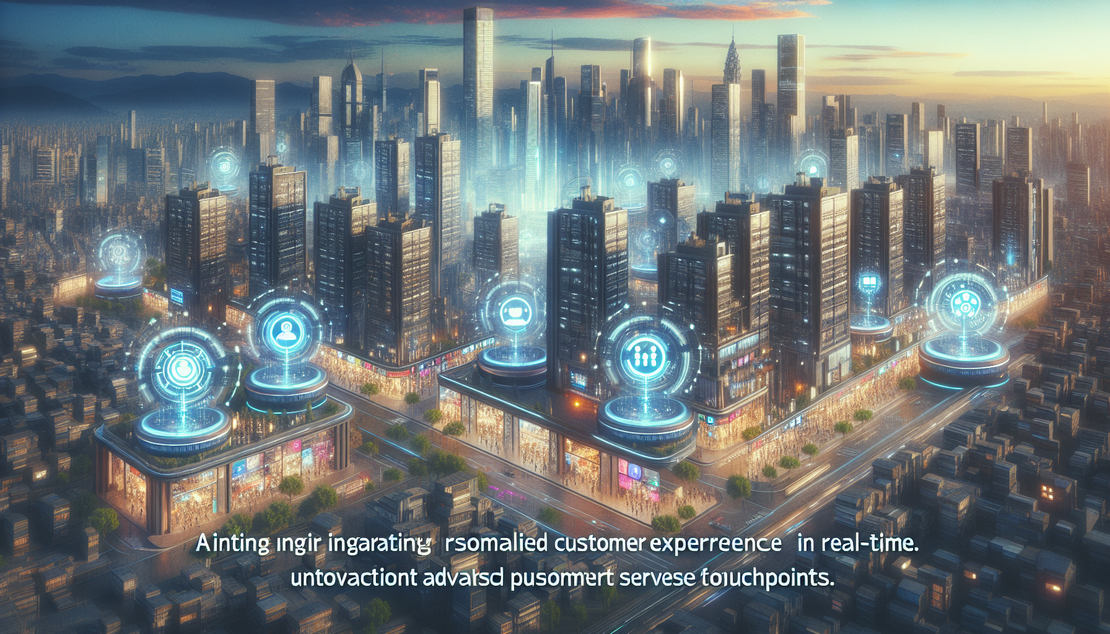
Optimizing Business Workflow with Automation and AI: A Comprehensive Guide
- Rajdeep Barad
- Business workflow automation , Automation and ai in business , Efficiency improvement , Tools for automation
- February 4, 2025
Optimizing Business Workflow with Automation and AI: A Comprehensive Guide
Understanding Automation and AI in Business
- Definition of automation and AI in the context of business
Automation involves using technology to perform repetitive tasks automatically, thereby increasing efficiency. AI, on the other hand, refers to machines mimicking cognitive functions like learning and problem-solving.
- Benefits of leveraging automation and AI in business workflows
Automating tasks can lead to reduced errors, increased productivity, and cost savings. AI can provide insights from data analysis, improve decision-making, and enhance customer experience.
- Key differences between automation and AI
Automation follows predefined rules to execute tasks, while AI can adapt to new situations and improve its performance over time through machine learning algorithms.
- Real-world examples of automation and AI implementation in business
Companies like Amazon use robots in warehouses for automated order fulfillment, while banks employ AI chatbots for customer service. These technologies streamline operations and enhance customer interactions.
- Common misconceptions about automation and AI
A common misconception is that automation and AI will replace human jobs entirely. In reality, these technologies often complement human work, allowing employees to focus on higher-value tasks.
Identifying Opportunities for Automation in Your Business
- Assessing current workflow inefficiencies
Pro Tip: Conduct a thorough workflow analysis to identify bottlenecks and repetitive tasks that could benefit from automation. Look for areas with high error rates or long processing times.
- Understanding which tasks are prime candidates for automation
Pro Tip: Start with simple, rule-based tasks that are time-consuming but require little cognitive input. Tasks involving data entry, report generation, or email responses are often good candidates for automation.
- Consulting with team members for input on automation opportunities
Pro Tip: Engage employees in the automation process to gather insights on daily challenges and pain points. Involving staff in decision-making promotes buy-in and ensures the chosen automation solutions align with their needs.
- Exploring industry-specific automation solutions
Pro Tip: Research industry best practices and specific automation tools tailored to your sector. While generic solutions may work, industry-specific tools often offer features designed to address unique requirements.
Choosing the Right Automation and AI Tools
- Researching reputable automation and AI software providers
Pro Tip: Look for providers with a proven track record in developing reliable and secure automation and AI solutions. Check customer reviews, ratings, and case studies to gauge the vendor’s reputation.
- Considering factors like scalability, integration capabilities, and customization options
Pro Tip: Prioritize tools that can grow with your business and seamlessly integrate with existing systems. Customization options are essential to tailor the tools to your specific workflow requirements.
- Reading user reviews and case studies for validation
Pro Tip: User reviews offer valuable insights into the user experience and potential challenges of implementing specific tools. Case studies showcasing successful implementations can provide a glimpse of the tool’s impact.
- Seeking demonstrations or trials before committing
Pro Tip: Request demos or trial periods to test the functionality and usability of the automation and AI tools. Hands-on experience allows you to assess whether the tools meet your business needs and are user-friendly.
Implementing Automation and AI Solutions in Your Business
- Creating a detailed implementation plan
Pro Tip: Develop a step-by-step plan outlining the implementation process, including timelines, responsibilities, and key milestones. A structured plan helps ensure a smooth transition to automated workflows.
- Training employees on new tools and processes
Pro Tip: Provide comprehensive training to employees on how to use the new automation and AI tools effectively. Investing in training upfront can lead to quicker adoption and maximize the benefits of the technology.
- Gradually phasing in automation to minimize disruption
Pro Tip: Implement automation in stages rather than all at once to reduce the impact on operations. Start with less critical tasks to test the system and gradually expand automation to more complex processes.
- Monitoring progress and adjusting as needed
Pro Tip: Continuously monitor key performance indicators (KPIs) to track the impact of automation on productivity, efficiency, and quality. Be prepared to make adjustments based on feedback and data analysis to optimize workflows.
Measuring the Impact of Automation and AI on Your Business
- Setting clear goals and KPIs for automation implementation
Pro Tip: Define specific goals such as reducing processing time by 20% or decreasing error rates by 15%. Establish key performance indicators to quantify the success of automation initiatives and ensure alignment with business objectives.
- Tracking metrics like cost savings, efficiency gains, and error reduction
Pro Tip: Use tools to measure metrics related to time saved, cost reductions, and improvements in accuracy. Analyzing these data points provides valuable insights into the ROI of automation investments.
- Gathering feedback from employees on the usability of new tools
Pro Tip: Encourage feedback from employees on their experience with the automation and AI tools. Their input can uncover usability issues, highlight areas for improvement, and guide further enhancements to optimize workflow efficiency.
- Revisiting and adjusting automation strategies based on results
Pro Tip: Regularly review the impact of automation on business operations and revisit your automation strategies. Use feedback, performance data, and evolving business needs to refine processes and ensure continuous improvement in workflow optimization.
Ready to transform your digital vision?
Get in touch with us to explore how our cutting-edge solutions can elevate your business to new heights. Contact us today!
Get in Touch


